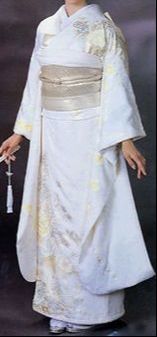
Kakeshita
The kakeshita is a wedding kimono with a slightly padded hem. The bride can either wear a colorful kakeshita, or a all white kakeshita called a shiro kakeshita.
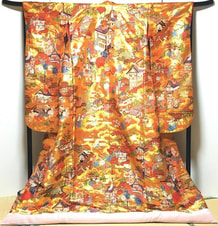 Uchikake A wedding kimono with a heavily padded hem. Often very flashy and colorful. If a bride wears a shiro kakeshita, it is common for her to wear a uchikake on top after the ceremony. 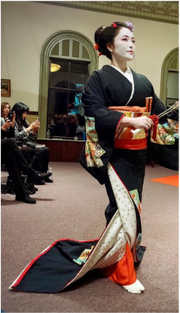 Hikizuri A long kimono for dancing that has a slightly padded hem. 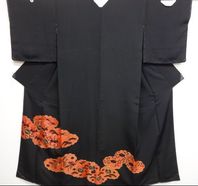 Tomesode Tomesode are the most formal kimono for married women. They only have a pattern along the hem. The more formal kuro tomesode has a black base. The slightly less formal iro tomesode has a colored base. These are now only worn by the mother of the bride at her wedding. 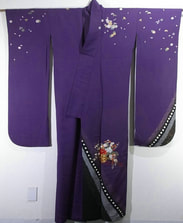 Furisode The furisode is the most formal kimono for an unmarried woman. It is characterized by the long dangling sleeves. 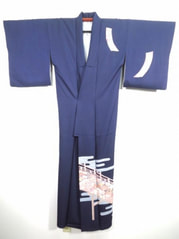 Houmongi While slightly less formal than the iro muji, this kimono is still pretty formal. The design for the houmongi runs across the bottom hem and also on the left sleeve. The patterns continue across the seams of the kimono. 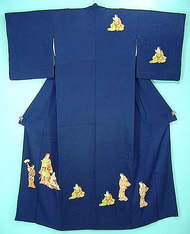 Tsukesage Similar to the houmongi, the tsukesage only has a pattern along the hem and the left sleeve. Unlike the houmongi, the pattern on a tsukesage is not continuous. 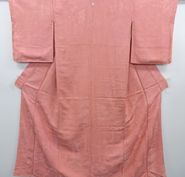 Iro Muji and Kuro Muji The iro muji is a solid color kimono with no pattern. If the kimono has crests on the back, it is roughly as formal as the houmongi and tsukesage. If it has no crests, then it is less formal. The kuro muji is a solid black kimono worn for funerals.  Yukata A yukata has a similar construction to a kimono, but is made out of cotton. This is very casual and is only worn for spring and summer. Originally based off of hot springs bathrobes, the yukata has become very popular at summer festivals. For additional information, see this chart of when each type of kimono is appropriate to wear and Asagiri Kimono's kimono and obi compatibility chart to find out what kind of obi to wear with each type of kimono. Men's Men's kimono do not have the detailed classification method that women's kimono have. But there are still varying types and levels of formality. For men, often the fabric and design will have a much bigger impact on the formality due to the narrower kinds of kimono available. For example, a smooth silk would be more formal than a rough pongee weave, which is more formal than the cotton kusuri weave. 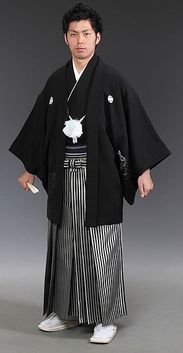 This is the most formal men's kimono. This outfit consists of a black kimono with five crests, a black haori, and hakama. All men's kimono is worn with tabi and zori. 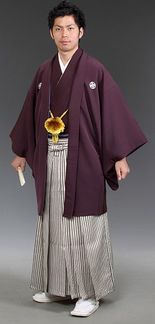 If the color is something other than black for the kimono and haori, the outfit becomes less formal. 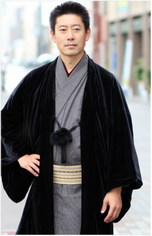 A kimono with only a haori will be even less formal. 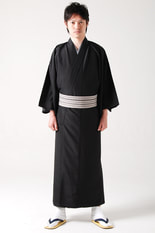 A simple kimono with nothing else is the most casual way for men to wear kimono. 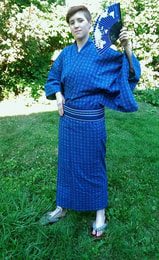 Just like for women, the cotton yukata is the most casual clothing a man can wear. Just like with women, this is the only outfit where you can wear wooden geta and no tabi. |
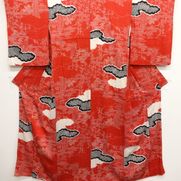
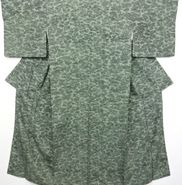
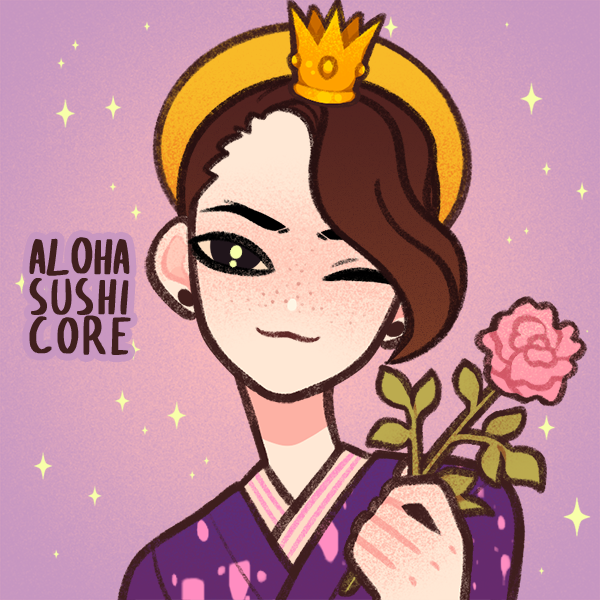
 RSS Feed
RSS Feed
